Knee Replacement Surgery in Nawanshahr: 5 Recovery Tips!
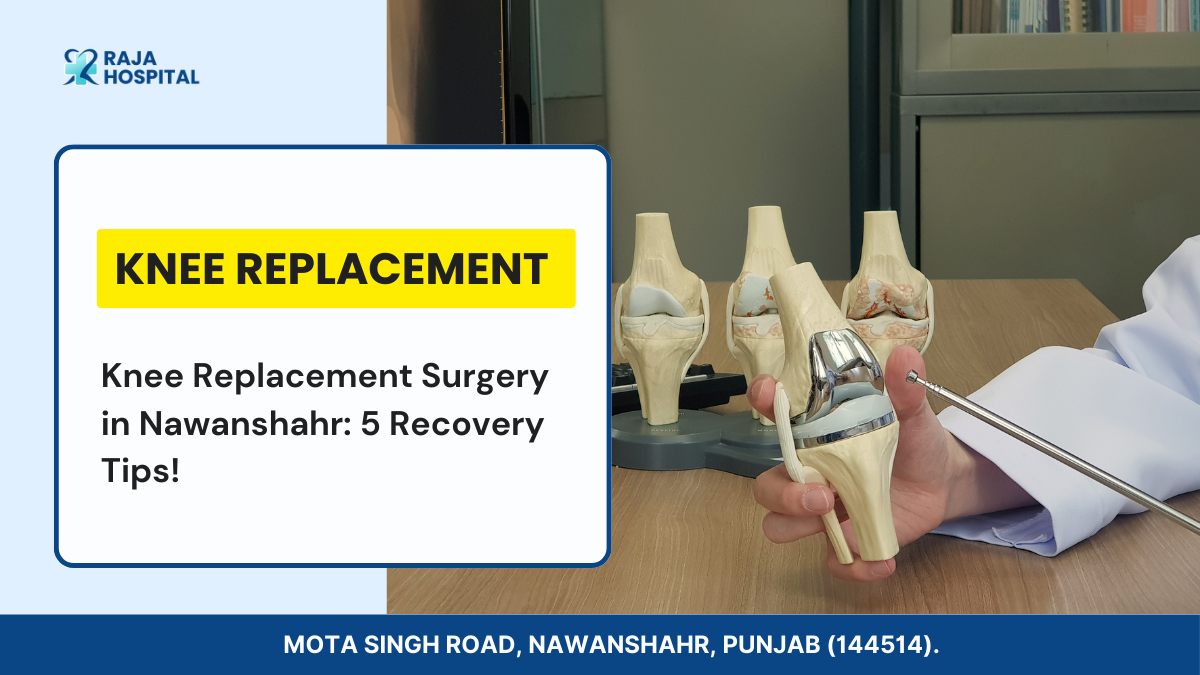
REVIEWED BY Dr. Lakhwinder Singh (MBBS, MS Orthopedics) on 9th March 2024.
You’ve been dealing with knee pain that just won’t quit. It’s been a real bother, right? Well, that’s where knee replacement comes into play. It’s like a superhero move for your knees!
So you’re looking up for knee replacement surgery, Well, let me tell you, it’s quite challenging, but don’t worry, we guide you through some insider tips that’ll help speed up your recovery process.
I know how important it is to bounce back quickly and get back on your feet. Let’s go deep into these tips and get you on the fast track to feeling like yourself again!
What is Knee Replacement?
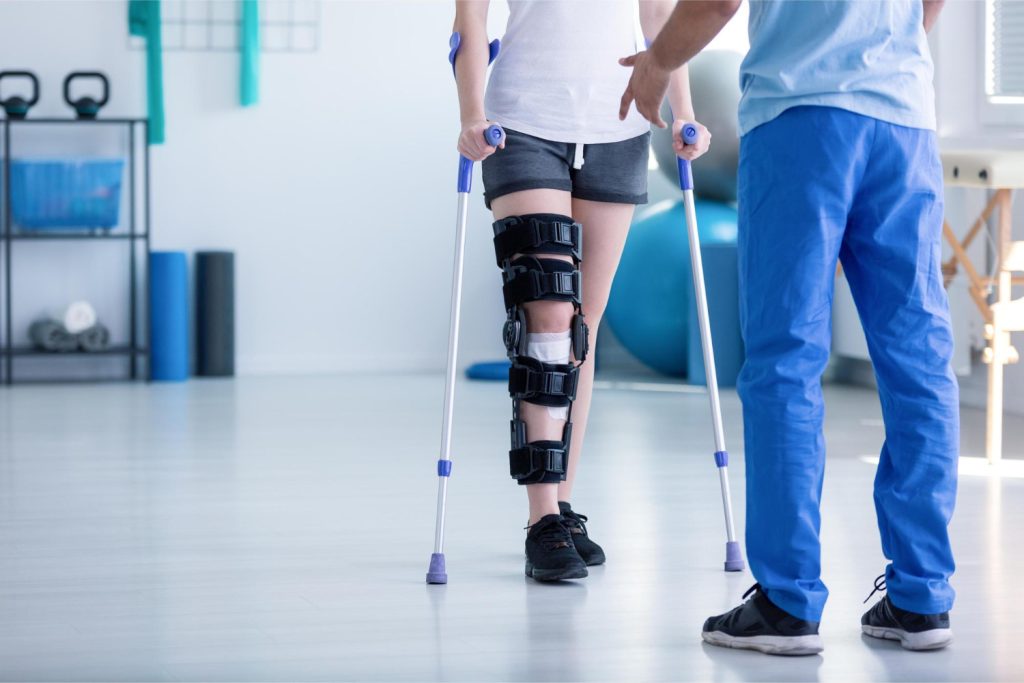
Knee Replacement Surgery, also known as Arthroplasty, becomes necessary when the knee structure is damaged due to wear and tear, osteoarthritis, or rheumatoid arthritis. This procedure involves replacing parts of the knee joint with artificial components.
In India, the success rate is impressive – over 95% of patients are completely satisfied with the results.
Types of Knee Replacement Surgery
Knee replacement surgery, also known as knee arthroplasty, is a common procedure aimed at relieving pain and improving mobility in individuals with severe knee arthritis or damage.
Some of these knee replacement surgeries are:
- Total Knee Replacement (TKR): It’s when they swap out your entire knee joint with a fake one.
- Partial Knee Replacement (PKR): If only part of your knee is acting up, they replace just that part.
- Minimally Invasive: Smaller cuts and less messing with muscles make recovery quicker and less painful.
- Bilateral Knee Replacement: Both knees get the artificial treatment in one go, usually for those with issues in both knees.
- Revision Knee Replacement: Fixing up a previous knee replacement that’s gone wonky.
- Gender-Specific Knee Replacement: Customized implants for men or women based on anatomy differences.
- Custom-Made Knee Replacement: Personalized implants designed from your specific anatomy for a better fit.
- High-Flex Knee Replacement: This lets you bend your knee more, useful for active folks who need that extra range.
Remember, the specific type depends on what’s up with your knee and what you and your surgeon decide is the best fit for you.
Who needs it?
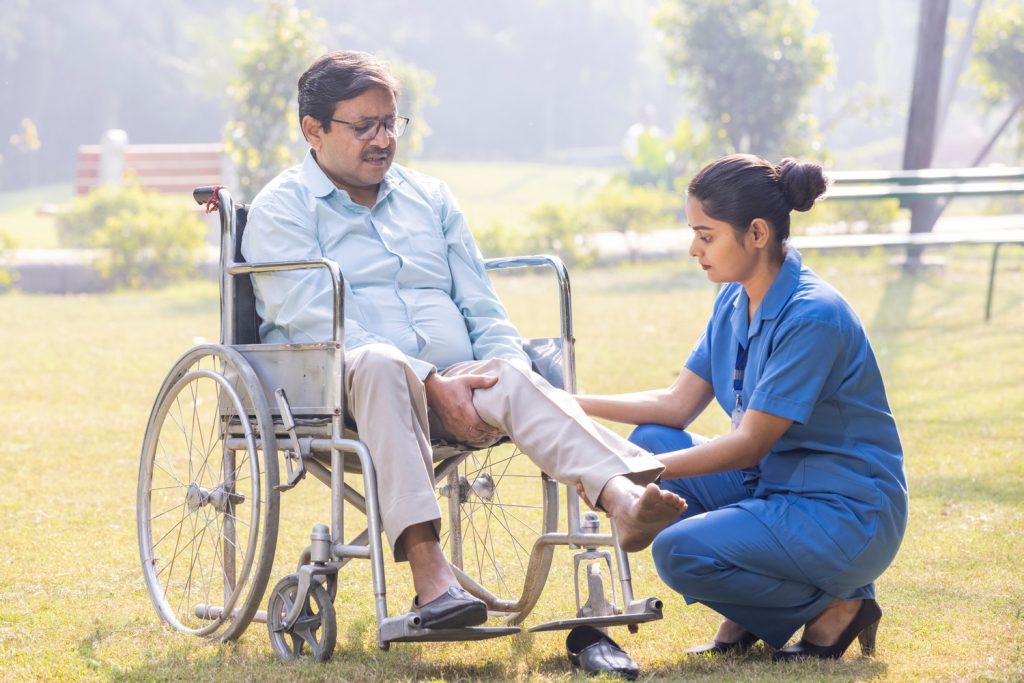
People who might need knee replacement are those who have really bad knee pain that doesn’t go away, especially when doing everyday things like walking or going upstairs. If the pain makes it hard to do normal activities and other treatments like medicine or physical therapy haven’t helped much, then doctors might consider knee replacement.
- Persistent Knee Pain: If you find yourself dealing with constant knee pain that doesn’t improve with medications, physical therapy, or other non-invasive treatments, it might be a sign that knee replacement surgery could be beneficial.
- Limited Mobility: When your knee pain restricts your ability to perform everyday activities like walking, climbing stairs, or even getting up from a chair, it might be an indication that a knee replacement could improve your mobility.
- Osteoarthritis: This surgery is often recommended for individuals with severe osteoarthritis, a degenerative joint disease that leads to the breakdown of the cartilage in the knee.
- Failure of Other Treatments: If you’ve already tried less invasive treatments such as Corticosteroid injections or Hyaluronic acid injections without significant relief, your doctor may consider knee replacement.
- Bone Deformities or Damage: Individuals with bone deformities or significant damage to the knee joint due to injury or other conditions may benefit from knee replacement surgery to restore function.
- Age Consideration: While age alone isn’t the sole factor, older adults who are in good health may be suitable candidates. However, the decision is often based on the overall health and activity level of the individual rather than a specific age.
- Quality of Life Impact: If knee pain is significantly affecting your quality of life, preventing you from engaging in activities you enjoy, knee replacement surgery may be a viable option to improve your overall well-being.
The decision to get knee replacement is made by the doctor, and they look at things like how much pain you’re in and how much it affects your daily life.
Procedure of Knee Replacement

It is a surgical procedure to replace a damaged or worn-out knee joint with a prosthesis.
- Health check and X-rays.
- Anesthesia for comfort.
- The surgeon cuts to access the knee.
- Remove damaged parts of the thigh and shin bones.
- Insert artificial knee components.
- Check stability and movement.
- Stitch or staple the cut.
- Monitor and start physical therapy.
- Recovery length varies, and therapy aids strength and movement.
Always discuss specific details with your healthcare team for personalized information.
Tests Performed Before Knee Replacement Surgery
Before knee replacement surgery, various tests are done:
- X-rays: Assess joint damage and bone quality.
- Blood Tests: Check overall health and identify medical conditions.
- MRI/CT Scan: Provide detailed images of soft tissues and bones.
- ECG: Evaluate heart function.
- Urine Tests: Check kidney and metabolic health.
- Physical Exam: Assess knee condition.
- Joint Aspiration: Withdraw fluid to check for infection.
- Dental Evaluation: Identify potential infection sources.
These tests ensure the patient is a suitable candidate and help plan a successful surgery.
How to prepare for Knee Replacement?
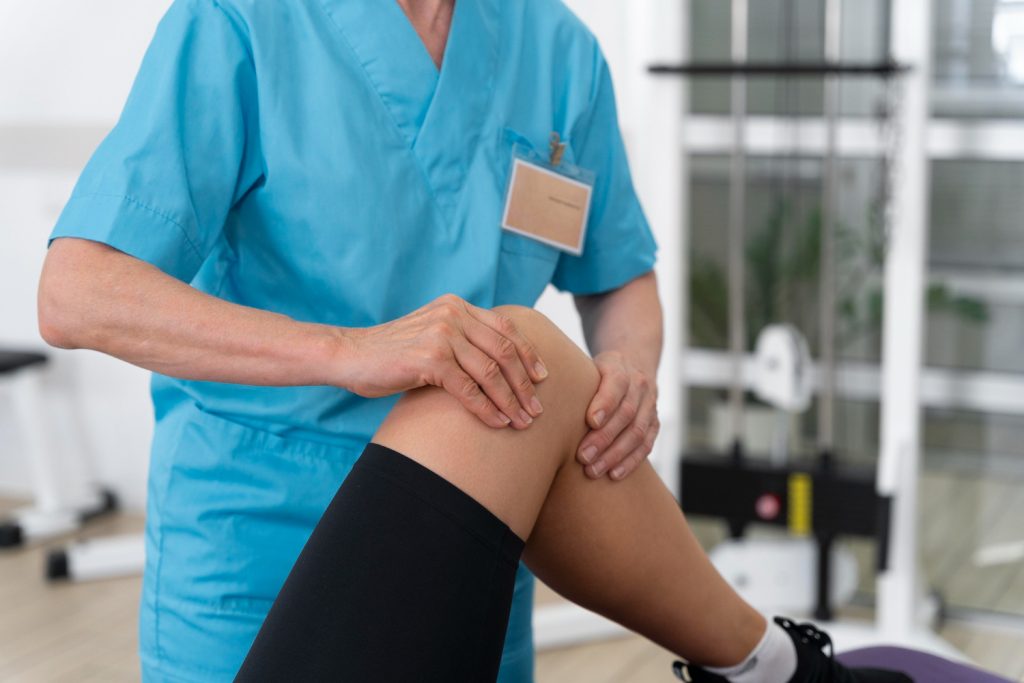
Getting ready for knee replacement surgery can be a big deal, but with some preparation, you can make the process smoother.
Let’s break it down into some easy steps:
- Meet your orthopedic surgeon.
- Complete preoperative assessments.
- Do physical therapy to strengthen knee muscles.
- Maintain a healthy lifestyle.
- Modify your home for easy movement.
- Arrange help at home for recovery.
- Follow preoperative instructions carefully.
- Plan transportation to and from the hospital.
- Understand post-surgery care.
- Pack essentials for your hospital stay.
- Mentally prepare for the surgery.
Each individual’s situation is unique, so it’s crucial to have open communication with your healthcare team throughout the entire process.
Risks Involved in Surgery:
While knee replacement surgeries are generally safe, it’s essential to be aware of potential risks including infection, blood clots, and anesthesia-related complications.
- Infection: Infections can occur shortly or years after knee replacement surgery, in the wound or prosthesis. Major infections may require surgery, and infections can also spread to other parts. Minor infections are treated with antibiotics.
- Blood clots: A blood clot in the leg veins can be life-threatening if it breaks free and travels to your lungs after knee replacement surgery. It may be recommended that you have your legs elevated periodically, exercise your lower legs to increase circulation, and wear support stockings for blood thinning.
- Implant problems: As implant designs and materials advance, so do surgical techniques, but implants may wear out and loosen over time. In addition, scarring may occasionally occur on the knee, and motion may be restricted, particularly in patients with limited motion before surgery.
- Continued pain: Some patients continue to experience pain after a knee replacement. Most patients experience excellent pain relief following knee replacements, however, so this complication is rare.
- Neurovascular injury: During surgery, nerves or blood vessels around the knee can be injured.
Before undergoing surgery, discuss your concerns with your orthopaedic surgeon.
Treatments After Knee Replacement Surgery

After knee replacement surgery, it’s crucial to follow a well-rounded treatment plan for a smooth recovery.
- Medication: Follow prescribed medications to manage pain and inflammation.
- Physical Therapy: Engage in regular physical therapy to regain strength and flexibility.
- Ice Packs: Apply ice packs to reduce swelling and discomfort.
- Weight Management: Maintain a healthy weight to minimize stress on the knee joints.
- Low-Impact Exercise: Incorporate low-impact activities like swimming or walking into your routine.
- Follow the Surgeon’s Advice: Adhere to your surgeon’s recommendations for a successful recovery.
Remember, every recovery is unique, so listen to your body and communicate openly with your healthcare team.
5 Tips Which helps you in Recovery
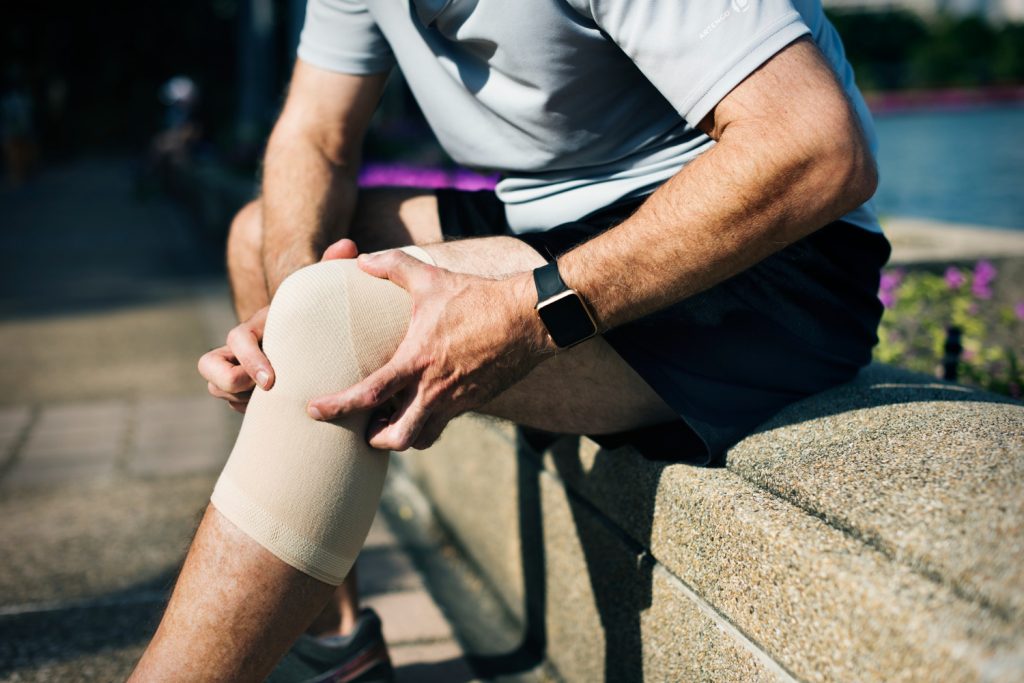
Recovering from knee replacement surgery can be challenging, but here are five tips to help make the process smoother:
Here are five tips for a faster recovery:
- Listen to Your Body: Pay attention to signals of fatigue or pain, and take breaks when needed.
- Follow Your Doctor’s Orders: Trust your doctor’s advice, including medications, therapy, and activity restrictions.
- Stay Active (But Don’t Overdo It): Engage in gentle exercises recommended by your physical therapist, gradually increasing activity.
- RICE Method: Rest, Ice, Compression, and Elevation help alleviate pain and swelling during recovery.
- Maintain a Positive Mindset: Stay optimistic, celebrate small victories, and surround yourself with supportive people.
Individual recovery experiences can vary, but by following these tips and being patient with yourself, you’ll be well on your way to a successful knee replacement recovery.
FAQ
Conclusion
Knee replacement surgery is a procedure to relieve severe knee pain and improve mobility by replacing damaged joint parts with artificial ones. While it’s effective, it’s important to consider risks and recovery needs. Following medical advice and rehabilitation post-surgery are vital for a successful outcome and a better quality of life.
Typically, patients are discharged within 4-5 days post Knee Replacement Surgery, followed by approximately 2 weeks of physiotherapy sessions.
Worry not, Raja Hospital is among the few hospitals that offer stitch-less knee replacement surgery and minimal cut technique surgery which offers painless surgery and post-operative recovery and less morbidity.
